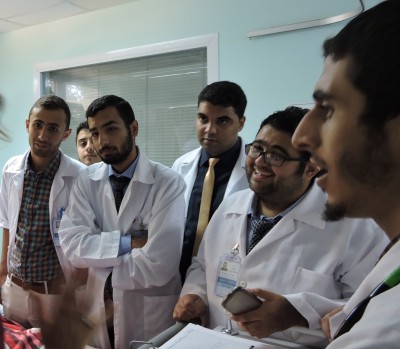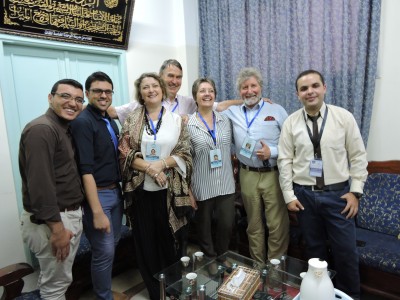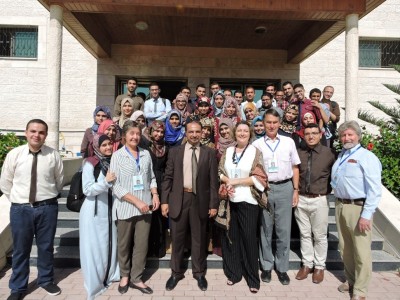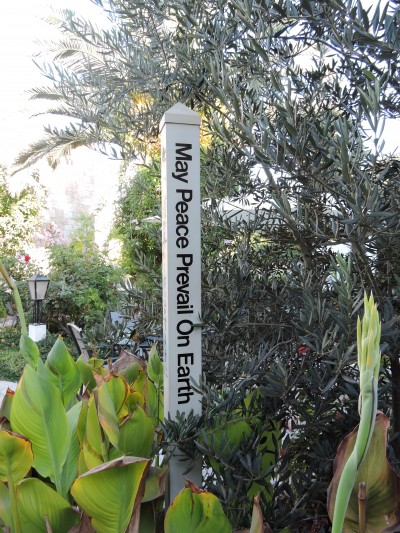
Blog: Hidden lives, hidden patients; refugees
![]() Dr Mhoira Leng
Dr Mhoira Leng
![]() 24th February 2017
24th February 2017
Hidden lives and hidden patients was the title of an excellent session at the recent IAPCON 2017. (see presentation 'Refugees' in resources section 'IAPCON 2017') I want to reflect a little on palliative care in one of the most vulnerable populations..... those affected and living in the midst of complex humanitarian situations. These includes natural disasters such as the 2014-2016 ebola epidemic in West Africa or the 2016 earthquake in Nepal where I am currently visiting but also the huge needs of those affected by conflict.
In these complex situations the rural areas are often most affected where health care is already a challenge. In addition the understandable focus on urgent care may mean that those living with chronic disease end of life care are overlooked and under resourced. More than at any previous time in history we are seeing huge movements of people forced, mainly because of conflict, to flee their homes. UNHCR estimates there are 65.3 million forcibly displaced people in our world with 21.3 million refugees, 10 million people who are stateless and only 107,100 re-setttled. While we hear so much about the numbers taking huge risks to get to Europe the majority of displaced persons stay in their core country or are hosted in nearby countries such as Turkey, Lebanon and Jordan. Uganda is experiencing a significant increase in refugees from South Sudan and I will write about this another time.
This is one of the major challenges of our age...how will we respond to this need? Will we be only focused on our own borders and back yard? Will we act as global citizens to defend rights, protect the vulnerable, offer shared compassion and be peacemakers?
Palliative care is one avenue for us to defend and protect this shared humanity. Let me share a little more about palliative care in one of the most complex and longstanding humanitarian situations..the Occupied Palestine Territories. The ongoing conflict and unresolved land issues result in huge inequalities, lack of access to basic necessities of living, lack of free movement and significant challenges with health care. A recent UN report describes this de-development and warns it might eb cecoem uninhabitable by 2020. In Gaza rising levels of chronic disease are accompanied by chronic stress and for many a sense of hopelessness. I have been privileged to visit Gaza on 2 occasions meeting amazing colleagues working to improve health care and in particular pain and palliative care. The recently formed palliative care steering group led by Dr Khamis Elessi has wide representation including WHO, academic institutions, UN , MOH and those delivering health services. They have identified some key priorities including education and training, access to essential medications. Policy needs and steps towards devoting rated service delivery and centres of teaching and excellence.UNRWA, the UN mandate, is seeking to address the need for chronic mental health within their family health teams. How do we approach palliative care when the overall needs seem so overwhelming and solutions few? One of the senior surgeons who has become world renowned for his surgical work in war conditions said 'our patients are in pain, we have no choice but to act'
The Islamic University of Gaza is seeking to integrate palliative care competencies into their curriculum and weclomed our partnership' starting with the undergraduate medical curriculum. (see presentation 'Gaza undergdaruate education' in resources section 'IAPCON 2017' ) Using international frameworks and our Palliative Care Curriculum Toolkit alongside the leadership from Dr Anwar Alshaihkalil, undergradute dean and Dr Fadel Naim, dean at IUG we worked with their innovative curriculum. Our international team (Drs Tony Jefferis, Janet Gillet, Colin Cooper and Mhoira Leng; from University of Edinburgh, PRIME, Cairdeas) agreed the core competency domains for palliative care and supported the first implementation. We met enthusiastic and interested teaching fellows and students who actively participated in the learning including role plays and group work...even walking up and down stairs breathing through a straw..to help understand how our patients feel. We spent time in clinical teaching rounds with patients and families from the medical, paediatric, oncology wards and intensive care. One memorable encounter was with a patient who was explaining his cancer diagnosis to the students but his son kept popping his head round the curtain to say 'dont say that dad you will be fine!'. A perfect scenario to model communication and the importance of including family members
Let me share some of the learning impact and give our Gazan students a voice....'the course added to the clinical practice makes us feel the suffering of patients and how we can help them’....'patients cope better when we tell them the truth' ....'I have learned to add smile and life to days not just days to life' ....thank you for ,....'I can do many serious works and have fun at the same time'....'we should never say there is never nothing we can do'......

IUG students

Mural by Banksy on dividing wall in Bethlehem

Ward rounds IUG

Teaching fellows and faculty

Class of 2016 palliative care

Beauty in the desert

Jerusalem prayer
